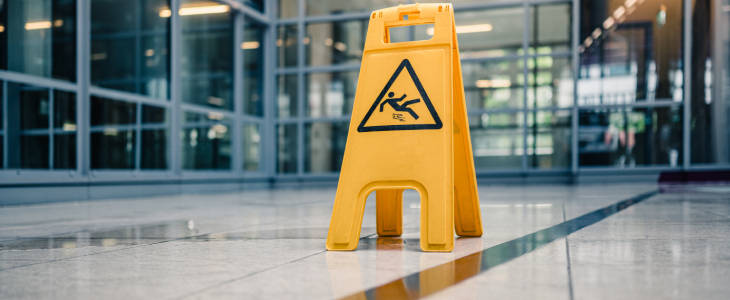Premises liability in California addresses the responsibilities property owners have to ensure the safety of visitors. Whether it’s a residential area, a shopping mall, or a public park, owners must take reasonable care to prevent accidents or injuries. This legal principle holds owners accountable for damages when they fail to maintain a safe environment.
What Is Premises Liability?
Premises liability refers to the legal responsibility property owners have regarding the safety of those who visit their property. Whether a location is a personal home, a business, or public land, there’s an expectation that it be free from hazardous conditions. When injuries occur due to unsafe conditions or negligence on the part of the property owner, they can be held liable for the resulting damages.
Common Situations Leading to Premises Liability Cases
- Slip, Trip, and Falls: Wet floors or uneven surfaces can cause individuals to trip and sustain injuries.
- Inadequate Maintenance: Failure to repair broken stairs or lighting can result in accidents.
- Defective Conditions: Malfunctioning elevators or escalators can lead to unexpected harm.
- Dog Bites or Animal Attacks: Property owners might be liable if their pet causes injury to a visitor.
- Swimming Pool Incidents: Lack of fencing or warnings can result in drownings or injuries.
- Inadequate Building Security: Insufficient security measures can lead to assaults or thefts on the property.
- Toxic Fumes or Chemicals: Exposure to harmful substances on the premises can cause health issues.
The Role of “Duty of Care” in California
In California, the “duty of care” principle mandates that property owners and managers maintain a safe environment for those who enter their premises. This duty implies that owners must regularly inspect their property for potential hazards, make necessary repairs, and provide adequate warnings for any dangers they cannot immediately address. It is their responsibility to take reasonable precautions to prevent foreseeable injuries to guests, customers, and even, in some cases, trespassers.
The specific level of care owed by the property owner can vary depending on the type of visitor. For instance, invitees (like customers in a store) are owed the highest level of care, whereas licensees (those who enter for their own purposes, like salespeople) are owed a slightly reduced level. Trespassers, though not invited, are still owed a basic level of care, particularly if they are children who might be attracted to a hazard, like an unfenced swimming pool.
Proving Negligence in a Premises Liability Claim
To successfully argue a premises liability claim based on negligence in California, plaintiffs must prove several elements. First, they must demonstrate that the property owner had a duty of care towards the injured person. Next, it must be shown that this duty was breached, either through action or inaction. The plaintiff then needs to connect this breach directly to their sustained injuries, asserting that the negligence was the actual cause of harm.
Gathering evidence is vital to proving these elements. This might include photographs of the hazardous condition, witness testimonies, or maintenance records showing a lack of regular property inspections. Additionally, it’s essential to anticipate defenses the property owner might present, such as asserting the injured party was aware of the danger but chose to encounter it anyway. Counteracting such defenses can be crucial in strengthening a premises liability claim.
Comparative Negligence in California
In California, the concept of comparative negligence plays a pivotal role in personal injury claims, including premises liability cases. This system allows for damages to be reduced in proportion to the plaintiff’s own level of fault. For instance, if a plaintiff is found to be 20% responsible for their injury, they would only be able to recover 80% of the total damages. This means that even if an injured party is partly to blame for their accident, they can still pursue compensation, though it may be reduced based on their share of the fault.
Steps to Take After a Premises Liability Injury
If injured on someone else’s property, it’s crucial to prioritize safety and documentation. First, seek medical attention immediately, even if injuries seem minor, as symptoms can manifest later. Document the accident scene by taking photographs of the hazardous condition and any visible injuries. Report the incident to the property owner or manager and obtain a copy of the report if available. Lastly, consult with a premises liability attorney to discuss potential legal recourse and ensure the preservation of crucial evidence.
The Importance of Acting Quickly: Statute of Limitations
The statute of limitations sets a time limit within which legal action must be taken for a specific type of claim. If a claimant fails to file a lawsuit within this specified timeframe, they may lose their right to pursue legal action and obtain compensation. The exact duration of the statute of limitations can vary depending on the nature of the claim, making it essential for potential claimants to be aware of these deadlines and act promptly.
Ardalan & Associates Can Help With Your Premises Liability Case
Understanding premises liability can be complex, but you don’t have to navigate it alone. If you or a loved one has experienced an injury on someone else’s property, our experienced legal team is here to help. Reach out to Ardalan & Associates today to ensure your rights are protected and to discuss the best path forward for your case.
Ardalan & Associates, PLC is a personal injury law firm based in Thousand Oaks, serving all of Southern California including Los Angeles, Ventura, Kern, and Orange Counties. We are committed to helping our clients involved in premises liability accidents seek justice and navigate their legal journey.
